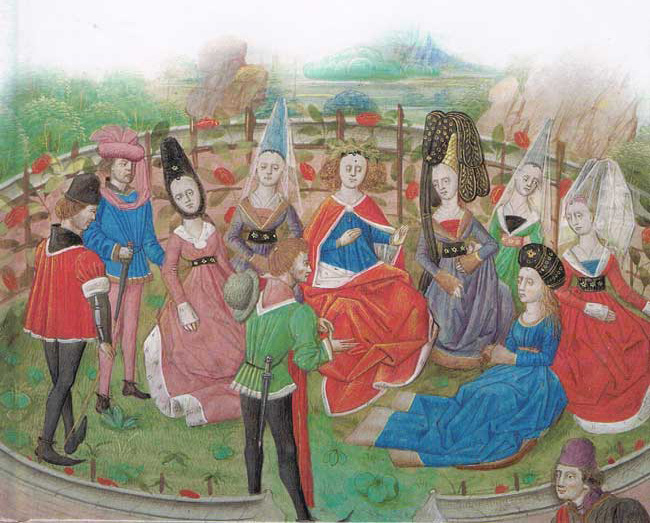
Giovanni Boccaccio’s masterpiece, the “Decameron,” is set on the outskirts of Florence in 1348. His protagonists have retreated to the countryside in the wake of the Black Death, which is decimating their city both mortally and socially. The book offers important lessons as we confront the global threat of Coronavirus.

It is first worth noting that the ten young people who flee Florence stay away for, you guessed it, two weeks. Like any good epidemiologist, Boccaccio understood that two weeks of self-quarantine should suffice to avoid contagion. Those of us exposed to the virus today are duly warned.
Second, our group passes its time in highly regimented ways that combine both solitude (a siesta after lunch, naturally) and companionship. During the warmer late hours of the afternoon they tell stories, each of the ten offering a story a day over ten days of their sojourn (the other days are dedicated to the Virgin, and to hair care). The tales, which make up the bulk of the book, have entertained readers for the ensuing centuries, offering a comprehensive study of human behavior at its best and its worst.
The “Decameron” reminds us that an epidemic can cause vast amounts of social disruption. Boccaccio begins by detailing the multiple ways in which Florentine society collapsed in the wake of the epidemic: parents abandoned children and vice-versa; corpses lay unattended; sick women hired men to care for them compromising their modesty; and so forth. He also describes three different approaches to the disease itself. Some Florentines surrendered to carefree living bordering on debauchery, while others practiced herbal remedies, walking about with nosegays in front of their faces to ward off disease. Still others fled.
The stories themselves study the sway of fortune in human lives, while also imagining how a post-plague world should operate. Reconstruction is an essential theme of the “Decameron,” particularly in terms of social relations. The stories look at all manner of relationships: between parents and children, husbands and wives, siblings, friends, boyfriends and girlfriends, servants and masters, monarchs and subjects. There is particular attention to the suffering of women, to whom Boccaccio dedicates the “Decameron,” as the frequent victims of oppressive male rule.
Even more important, perhaps, is Boccaccio’s prescription that we avoid isolation. If we need to quarantine ourselves, we should do it in groups. I suspect he would be wary of technological solutions to isolation, preferring immediate human contact when at all possible. A smiling emoji will never replace a human smile, or a human touch, or the spontaneity of overlapping voices. The estrangement that disease provokes should never be normalized.
The “Decameron,” in sum, is a book that speaks to the concerns of today, and of this moment, like none other. Boccaccio urges us to change what we can and, in the face of what we can’t change, to chart a path to happiness anyway. He encourages compassion and empathy, companionship and generosity; he shows us how to tolerate ambiguity, and to respond with civility to those with whom we disagree.
Disease is scary, but not all answers come from science. Science cannot affect how we get along. It cannot fully address problems of inequality, exploitation, or oppression. It cannot lead us through a critique of values or the weighing of moral concerns. Literature speaks to all those things.
Boccaccio does not have all the answers, but he does provide an enduring model of ethical response to a crisis. As we await the end of this pandemic, we would do well to pause and ask what kind of world we want to inhabit when it’s over.
Michael Sherberg is professor of Italian in Arts & Sciences at Washington University in St. Louis. His publications include “The Governance of Friendship: Law and Gender in the ‘Decameron'” (2011). He is co-editor of “Boccaccio: A Guide to the Complete Works” (2013).